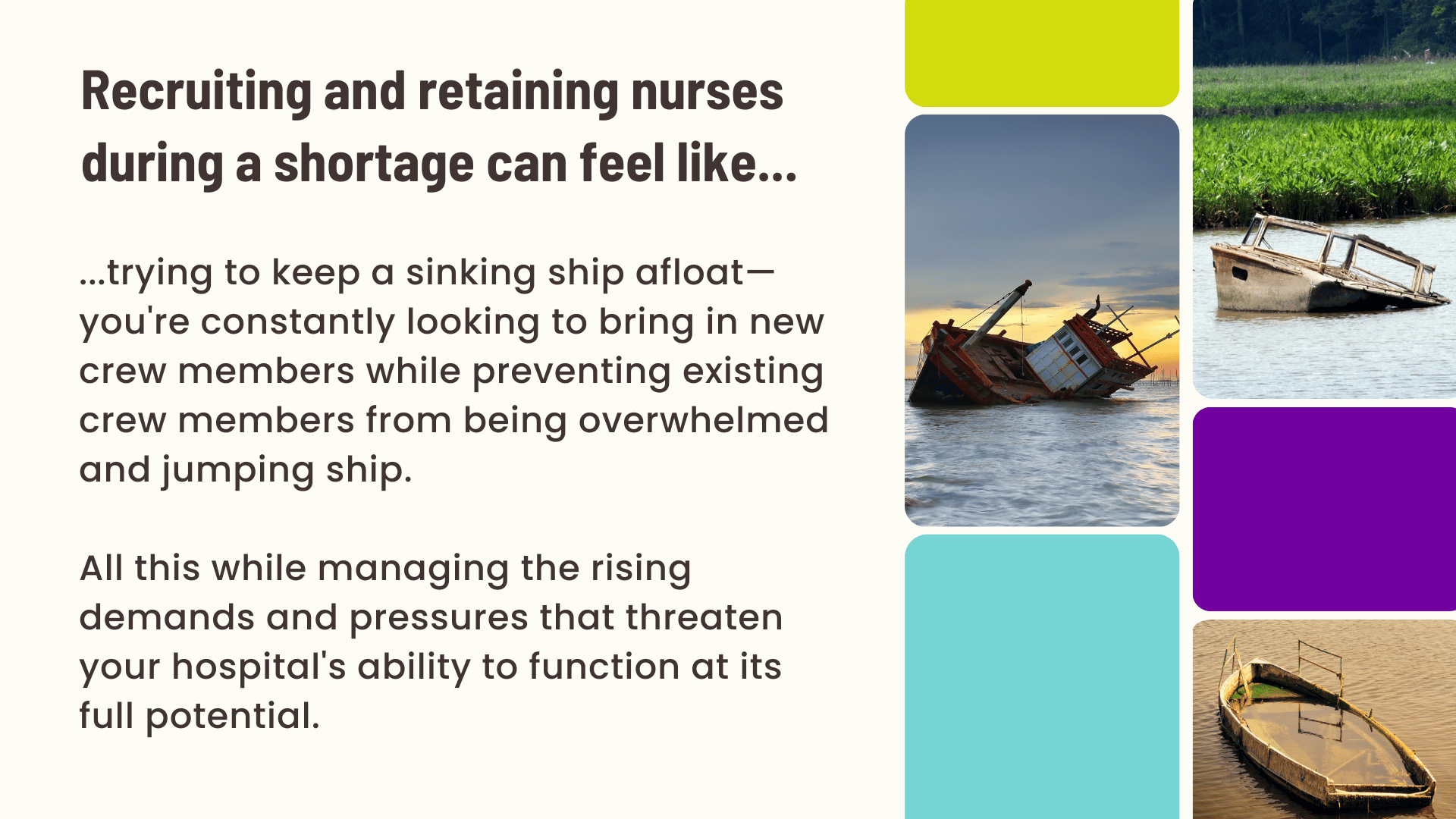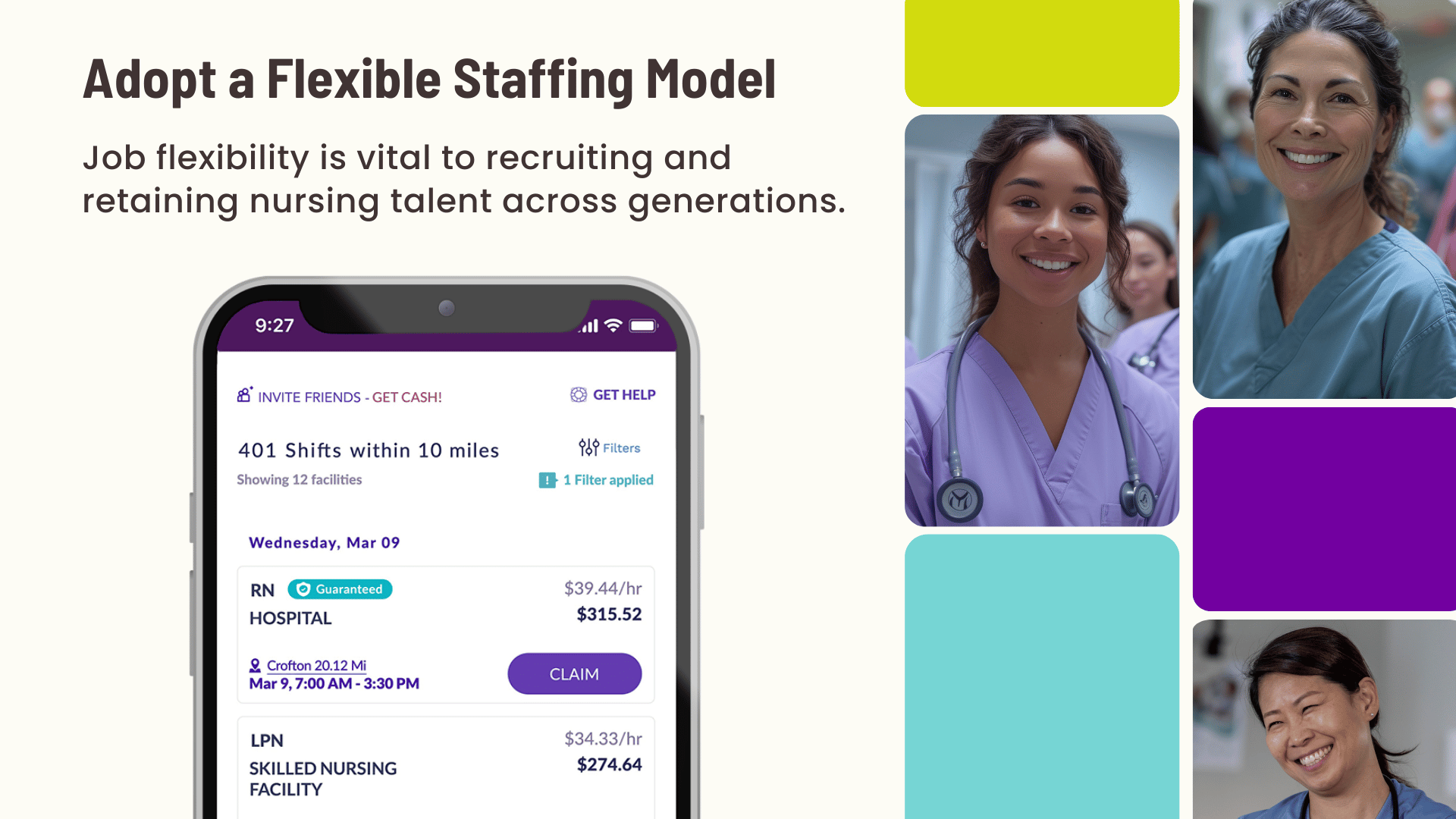How to Overcome Nurse Recruitment and Retention Challenges

Nursing shortages existed before COVID-19, but the pandemic accelerated the trend, worsening burnout and stress and leading to early retirements and a mass workforce exodus. However, studies show the real drivers are deeper issues like inadequate staffing, lack of support, emotional strain, and better pay.
A study published in JAMA found that the U.S. RN workforce is stabilizing, with projections of 4.56 million RNs by 2035—aligning with pre-pandemic forecasts. The authors, analyzing census data, noted, "The rebound in the total size of the U.S. RN workforce during 2022 and 2023 suggests that the earlier drop in RN employment during the pandemic's first two years was likely temporary."
As of August 30, 2024, the National Council of State Boards of Nursing (NCSBN) reported 5,762,433 active registered nurse (RN) licenses in the United States.
So, the question becomes: how can healthcare leaders rebuild and strengthen their nursing teams? Addressing burnout and stress from heavy workloads and unsupportive conditions requires innovative workforce solutions beyond traditional nurse recruitment and retention, focusing on staff well-being, workplace culture, and growth opportunities.
Why Is Recruitment and Retention in Healthcare Important?
While nurse turnover and vacancy rates are rebounding, workforce shortages are still a long-term worry for many healthcare leaders. As the nation's population ages and demand for care rises, healthcare systems face mounting pressure to maintain staffing levels that ensure quality care, putting nurse recruitment and retention high on their priority lists.
A recent survey by Becker's Healthcare and Microsoft revealed that staffing shortages and talent retention remain top concerns for nurse leaders. Of the 129 respondents, over half were C-suite executives, with chief nursing officers making up 44% of participants.
When asked to identify the top nursing challenges within their organizations, survey participants cited staffing shortages (18%) and recruitment/retention (13%) as the top two. Over one-third (36%) of survey participants indicated they plan to invest or increase investments in recruitment and retention initiatives. After all, 45% of the participants said recruiting and onboarding a new nurse costs more than $20,000, making investing in nurse retention necessary.
Another 2024 survey targeting hospital executives published by FTI Consulting found that employee morale, high costs, and technology were common concerns among the 200 respondents. Upon closer examination, quality of care (47%), recruitment and retention costs (29%), and workforce shortages (28%) are top-of-mind concerns for healthcare executives.
In fact, 49% of hospital executives believe their hospitals aren't fully prepared to deal with current patient volumes, and a significant number are implementing changes because of potential workforce issues.

5 Innovative Nurse Recruitment and Retention Strategies
First and foremost, healthcare employers must "meet nurses where they’re at" to build and sustain a strong nursing workforce. This means continuously recognizing and addressing the evolving needs, challenges, and circumstances nurses face, both personally and professionally.

1. Adopt a Flexible Staffing Model
Flexible staffing has become a highly effective recruitment tool in today's competitive labor market. As nurses increasingly prioritize work-life balance and job flexibility, organizations that promote a culture of flexibility can attract top talent and set themselves apart as employers of choice.
According to the American Nurses Foundation's three-year annual assessment survey from 2023, 58% of nurses identified work-life balance as the most crucial factor in their job satisfaction.
Consider this: Millennial and Gen Z nurses highly value workplace flexibility, making hospitals with flexible schedules more likely to retain younger nurses as veteran nurses retire. Additionally, flexible schedules are desirable to experienced nurses nearing retirement. Hospitals can retain their expertise by offering part-time and customized shifts, which is vital for mentoring younger staff and ensuring high-quality care.
Believe it or not, modern workforce management solutions, such as ShiftMed Flex and ShiftMed On Demand, make it easy and cost-effective for healthcare organizations to adopt flexible staffing models.
2. Provide Physical and Psychological Safety
Nurses across the country are facing an alarming increase in workplace violence. A 2023 survey by National Nurses United (NNU), the largest union and professional association for registered nurses, revealed that 81.6% of nurses have experienced some form of workplace violence in the past year.
"Ensuring the physical safety of our nursing staff is a top priority,” said Tim Johnsen, COO at Presbyterian Healthcare Services, during the Pulse Check webinar Future Innovations in Nursing. "We've implemented silent duress alarms that nurses can activate if they feel threatened."
Nurses also thrive in environments built on trust, respect, and support, where they can voice concerns and provide feedback without fear of repercussions. Prioritizing psychological safety is critical to boosting nurse job satisfaction.
In the Pulse Check webinar Empowering Nursing Teams Through Mentorship, Monica Bologna, Chief Nursing Officer at West Jefferson Medical Center, shared how their programs prevent burnout and promote well-being, contributing to a 90% nurse retention rate.
"We actively listen to our frontline staff through structured governance systems, allowing them to shape decision-making," Bologna explained. "Service Excellence Advisors (SEAs) in every department meet with the executive team monthly to ensure their voices are heard.”

Streamline Clinical Workflows
The Becker's Health and Microsoft survey also highlighted that inefficient clinical workflows and administrative burdens significantly contribute to nurse turnover. Therefore, nearly half (48%) of survey respondents use technology to allow nurses to do what they do best: care for patients.
AI-powered workforce management platforms like ShiftMed enhance nurses’ work experiences in multiple ways. Adaptive scheduling allows healthcare organizations to efficiently adjust to changing patient demand, while predictive analytics help anticipate staffing needs. Additionally, automation streamlines administrative tasks and minimizes overtime, reducing the burden on nurses and improving overall job satisfaction.
4. Offer Personalized Incentives
Nurses have diverse needs: some prioritize flexible scheduling, while others value financial incentives or career development. Tailoring incentives to these preferences ensures that all nurses feel valued and supported. For example, a transportation stipend can significantly aid a nurse with commuting issues.
Moreover, traditional pay structures can feel outdated in today's convenience-driven era. Adopting payroll agility allows healthcare organizations to provide innovative financial wellness benefits, boosting productivity and improving nurse retention.
According to the "Death of the Traditional Paycheck" online survey conducted by The Harris Poll on behalf of The Workforce Institute at Kronos Incorporated, 57% of employees indicated they would work harder and stay longer at a company that offers on-demand pay with no significant difference between hourly and salary employees.

5. Pilot a Nurse Influencer Program
A social media strategy featuring a nurse influencer can dramatically boost nurse recruitment at a hospital. Nurse influencers offer an authentic and relatable perspective on the nursing profession and hospital environment, giving potential recruits a true sense of working there.
By showcasing the positive experiences of current staff, these influencers enhance the hospital's visibility and appeal, effectively highlighting its strengths and vibrant culture. Tune into the Pulse Check webinar, Building a Resilient Nursing Workforce, to discover how SSM Health in St. Louis leverages social media to attract and recruit nurses.
Nurse Recruitment and Retention Conclusion
Tackling the challenges of nurse recruitment and retention demands a comprehensive approach that transcends traditional methods.
As the healthcare landscape evolves, so must the strategies to attract and retain top nursing talent—from implementing flexible staffing models to engaging potential candidates through social media.
Healthcare leaders can effectively address recruitment and retention issues by adopting innovative strategies, ultimately fostering a resilient and satisfied nursing workforce.